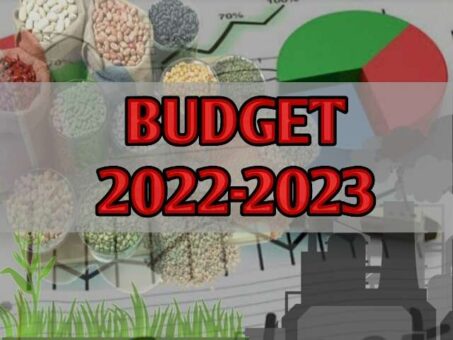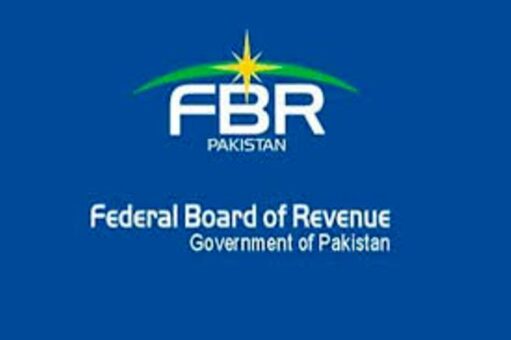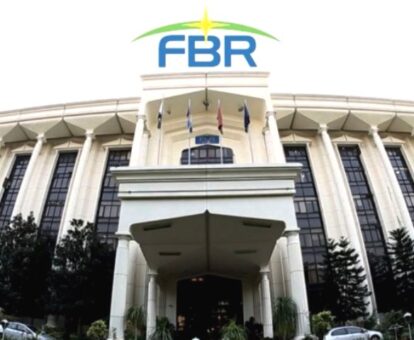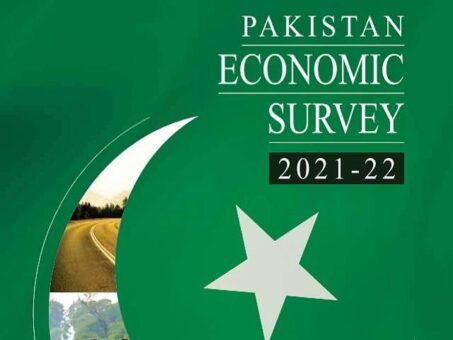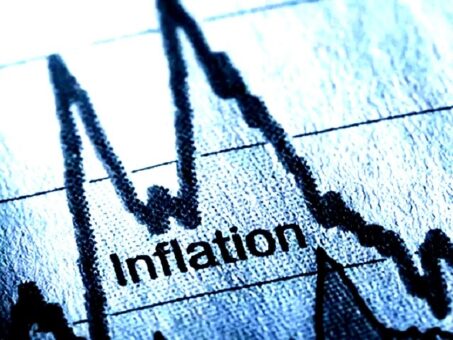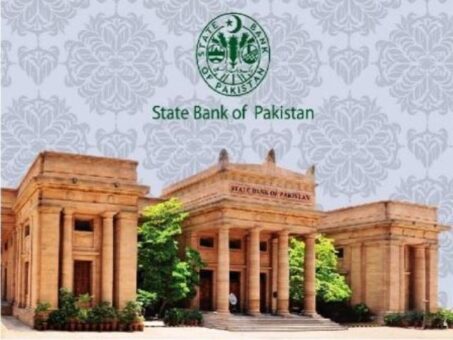ISLAMABAD: The State Bank of Pakistan (SBP) has increased the key policy rate by 6.75 per cent during September 2021 to May 2022, according to Economic Survey of Pakistan 2021/2022 released on Thursday.
The survey stated that Pakistan’s economy has witnessed a V-shaped recovery in 2020-2021 after witnessing a contraction of 0.9 percent in FY2020.
After the COVID outbreak, the policy rate was reduced by 6.25 per cent within short span of less than three months, during March-June 2020. This was the largest policy rate cut in emerging market economies.
READ MORE: Tax to GDP ratio estimated at 10.8% in FY22: Economic Survey
During FY2021, the SBP maintained an accommodative monetary policy stance, by keeping the policy rate unchanged at 7.0 percent throughout FY2021.
Besides, SBP provided liquidity and regulatory support to businesses and households during the challenging times. The economic policy was implemented with a prudent mix which supported the economic recovery without putting any pressure on macroeconomic imbalances.
With heightened uncertainty due to COVID-19, the Monetary Policy Committee for the first time considered it appropriate to provide some forward guidance on monetary policy in its January 2021 meeting, to facilitate policy predictability and decision making by economic agents.
In the absence of unforeseen developments, the Monetary Policy Committee (MPC) expected monetary policy settings to remain unchanged in the near term.
READ MORE: LSM posts 10.4% growth in July – March: Economic Survey
Moreover, in the subsequent monetary policy decisions during FY2021, the MPC has maintained the policy rate of 7.0 percent to nurture the economic recovery.
At the end of first quarter FY2022, policy rate has increased by 25 basis points (bps) to 7.25 percent. The decision was primarily based on observation of excess aggregate demand and more than expected economic recovery as reflected by rising high import bill and increasing current account deficit.
The objective of monetary policy was shifted to ensuring the appropriate policy mix to protect the longevity of growth, keep inflation expectations anchored, and control the current account deficit.
In subsequent Monetary Policy decisions announced in November and December, 2021, policy rate was increased by 150 bps and 100 bps to 8.75 percent and 9.75 percent, respectively. The decision was made due to heightened risks associated with inflation and balances of payments, which stemmed from both global and domestic factors.
READ MORE: Agriculture surpasses FY22 growth target: Economic Survey
In Pakistan, high import prices have contributed to higher-than-expected inflation outturns. At the same time, there were also emerging signs of demand-side pressures on inflation from domestic administered prices.
In December, 2021 Monetary policy decision, MPC explained that the goal of mildly positive real interest rates was now close to being achieved. Looking ahead, the MPC expected monetary policy settings to remain broadly unchanged in the near-term.
Resultantly, policy rate has kept unchanged at 9.75 percent in two successive decisions held on January and March, 2022.
However, policy rate was increased by 250 bps to 12.25 percent from 9.75 percent in an unscheduled meeting on 07th April 2022, to address significant uncertainty amidst rising global commodity prices and domestic political situation. The inflation outlook had deteriorated and risks to external stability had increased for FY2022. Externally, futures market suggests that global commodity prices, including oil, are likely to remain elevated for longer and the Federal Reserve is likely to increase interest rates more quickly than previously anticipated, likely leading to a sharper tightening of global financial conditions.
READ MORE: Per capita income in Pakistan rises to $1,798 in 2021-22
Domestically, some macroeconomic indicators have deteriorated, as have SBP reserves as a result of debt repayment and political uncertainty.
In monetary policy decision held on 23rd May, 2022 the MPC decided to raise the policy rate by 150 basis points to 13.75 percent. The decision was based on outcome of provisional growth estimates for FY2022 more than target, shows excess aggregate demand, elevated external sector pressure and the higher inflation outlook due to domestic and international factors.
In addition to policy rate increase, the interest rates on EFS and LTFF loans are also being raised. The MPC has informed that in future, these rates will be linked to the policy rate and will adjust automatically, while continuing to remain below the policy rate in order to incentivize exports.
